
Enrange CHTX Transmitter
Remote Equipment Control
Instruction Manual
Part Number: 198-80201-0001 R2
December 2017
©Copyright 2017 Magnetek Material Handling

Enrange CHTX Transmitter Instruction Manual
December 2017
Page 2 of 47
Page Intentionally Left Blank

Enrange CHTX Transmitter Instruction Manual
December 2017
Page 3 of 47
Table of Contents
1 Introduction.........................................................................................................................................6
1.1 Product Manual Safety Information ..............................................................................................6
1.2 Warnings and Cautions ................................................................................................................ 7
2 Critical Installation Considerations ..................................................................................................8
2.1 General.........................................................................................................................................8
2.2 Persons Authorized to Operate Radio Controlled Machineries....................................................8
2.3 Safety Information and Recommended Training for Radio Controlled Equipment Operators...... 9
2.4 Transmitter Unit..........................................................................................................................10
2.5 Pre-Operation Test.....................................................................................................................10
2.6 Handling Batteries ...................................................................................................................... 10
2.7 Optional Rechargeable Battery Charging................................................................................... 11
2.8 Battery Disposal .........................................................................................................................11
2.9 Crane/Lifting Device Specific Warnings .................................................................................... 11
3 CHTX Transmitter Standard Configuration and Operation...........................................................13
3.1 Installing the Chest Plate............................................................................................................14
3.2 Installing the Battery Pack..........................................................................................................14
3.3 Turning the Transmitter On and Off ...........................................................................................18
3.4 Machine Stop Switch (for Emergency Stopping Only) ...............................................................20
3.5 Power/Status and Battery LED...................................................................................................20
3.6 Optional Graphic User Interface.................................................................................................21
3.7 Normal Operating Mode with Standard Status LED(s)...............................................................21
3.8 Normal Operating Mode with Optional Graphic User Interface ..................................................23
3.9 Joysticks and Paddles/Levers .................................................................................................... 24
3.10 Rotary Selector Switch ...............................................................................................................24
3.11 Auxiliary Switches ......................................................................................................................24
4 Transmitter Setup .............................................................................................................................25
4.1 Transmitter Setup Settings With Standard Status LED.............................................................. 25
4.2 Using the Transmitter in Setup Mode (with Optional Graphic User Interface) ...........................27
5 Optional Programming with RCP ....................................................................................................30
5.1 Access Codes ............................................................................................................................30
5.2 Changing Receiver Access Codes.............................................................................................30
5.3 Connecting the CHTX to a Computer.........................................................................................31
5.4 Programming with RCP..............................................................................................................31
6 Transmitter RF Channel Configuration ..........................................................................................40
6.1 FCC Statements.........................................................................................................................40
6.2 Channel and Frequency Designations by Count........................................................................41
6.3 Optional Frequencies and Channels ..........................................................................................42
7 Optional CAN Bus Tether Feature...................................................................................................43
7.1 Installation of Tether Cable ........................................................................................................ 43
7.2 Operation of Transmitter in Tether Mode ...................................................................................43
7.3 Returning Transmitter to Wireless Mode....................................................................................43
7.4 CAN Connector Receptacle Pin-out Details...............................................................................44
8 Troubleshooting ...............................................................................................................................45
8.1 General Troubleshooting............................................................................................................45
8.2 Optional Tether Operation Troubleshooting ...............................................................................47
8.3 Assembly and Replacement Parts .............................................................................................47

Enrange CHTX Transmitter Instruction Manual
December 2017
Page 4 of 47
Page Intentionally Left Blank

Enrange CHTX Transmitter Instruction Manual
December 2017
Page 5 of 47
Your New Radio Remote Control System
Thank you for your purchase of Magnetek's Enrange® brand CHTX Radio Remote Equipment Control.
Magnetek has set a whole new standard in radio-remote performance, dependability, and value with this
unique new line of radio transmitters.
If your product ever needs modification or service, please contact one of our representatives at the
following locations:
U.S. Service Information
For questions regarding service or technical information, contact:
1-866-MAG-SERV
(1-866-624-7378)
World Headquarters:
Magnetek, Inc.
N49 W13650 Campbell Drive
Menomonee Falls, WI 53051
Telephone: 800-288-8178
Website: www.magnetekmobilehydraulic.com
E-mail: [email protected]
Fax Numbers:
Main: 800-298-3503
Sales: 262-783-3510
Service: 262-783-3508
Magnetek, Inc. has additional satellite locations for Canada and the United States. For more information,
please visit http://www.magnetekmobilehydraulic.com.
© 2017 MAGNETEK MATERIAL HANDLING
All rights reserved. This notice applies to all copyrighted materials included with this product, including, but
not limited to, this manual and software embodied within the product. This manual is intended for the sole
use of the person(s) to whom it was provided, and any unauthorized distribution of the manual or dispersal
of its contents is strictly forbidden. This manual may not be reproduced in whole or in part by any means
whatsoever without the expressed written permission of MAGNETEK.

Enrange CHTX Transmitter Instruction Manual
December 2017
Page 6 of 47
1 Introduction
Thank you for your purchase of Magnetek’s Enrange
®
brand CHTX Radio Remote Equipment Control.
These instructions are to be used as a reference for personnel operating the Enrange
®
brand CHTX Radio
Remote Equipment Control and the equipment that this Enrange
®
brand CHTX Radio Remote Equipment
Control is attached to.
The user of these instructions should have basic knowledge in the handling of electronic equipment.
1.1 Product Manual Safety Information
Magnetek, Inc. (Magnetek) offers a broad range of radio remote control products, control products and
adjustable frequency drives, and industrial braking systems for overhead material handling applications.
This manual has been prepared by Magnetek to provide information and recommendations for the
installation, use, operation and service of Magnetek’s material handling products and systems (Magnetek
Products). Anyone who uses, operates, maintains, services, installs or owns Magnetek Products should
know, understand and follow the instructions and safety recommendations in this manual for Magnetek
Products.
The recommendations in this manual do not take precedence over any of the following requirements
relating to cranes, hoists and lifting devices:
• Instructions, manuals, and safety warnings of the manufacturers of the equipment where the radio
system is used,
• Plant safety rules and procedures of the employers and the owners of facilities where the
Magnetek Products are being used,
• Regulations issued by the Occupational Health and Safety Administration (OSHA),
• Applicable local, state or federal codes, ordinances, standards and requirements, or
• Safety standards and practices for the specific industry.
This manual does not include or address the specific instructions and safety warnings of these
manufacturers or any of the other requirements listed above. It is the responsibility of the owners, users
and operators of the Magnetek Products to know, understand and follow all of these requirements. It is the
responsibility of the owner of the Magnetek Products to make its employees aware of all of the above listed
requirements and to make certain that all operators are properly trained. No one should use Magnetek
Products prior to becoming familiar with and being trained in these requirements and the
instructions and safety recommendations for this manual.
WARRANTY INFORMATION
FOR INFORMATION ON MAGNETEK’S PRODUCT WARRANTIES BY PRODUCT TYPE, PLEASE
VISIT WWW.MAGNETEKMOBILEHYDRAULIC.COM.

Enrange CHTX Transmitter Instruction Manual
December 2017
Page 7 of 47
1.2 Warnings and Cautions
Throughout this document WARNING and CAUTION statements have been deliberately placed to
highlight items critical to the protection of personnel and equipment.
NOTE: A NOTE statement is used to notify people of installation, operation, programming, or
maintenance information that is important, but not hazard-related.
WARNINGS and CAUTIONS SHOULD NEVER BE DISREGARDED.
The safety rules in this section are not intended to replace any rules or regulations of any applicable local, state, or
federal governing organizations. Always follow your local lockout and tagout procedure when maintaining any radio
equipment. The following information is intended to be used in conjunction with other rules or regulations already in
existence. It is important to read all of the safety information contained in this section before installing or operating the
Radio Control System.
WARNING
WARNING indicates a potentially hazardous situation which, if not avoided, could result in death or
serious injury.
CAUTION
CAUTION indicates a potentially hazardous situation which, if not avoided, could result in minor or
moderate injury. It may also be used to alert against unsafe practices.

Enrange CHTX Transmitter Instruction Manual
December 2017
Page 8 of 47
2 Critical Installation Considerations
2.1 General
Radio controlled material handling equipment operates in several directions. Cranes, hoists, lifting devices
and other material handling equipment can be large and can operate at high speeds. The equipment is
often operated in areas where people are working in close proximity to the material handling equipment.
The operator must exercise extreme caution at all times. Workers must constantly be alert to avoid
accidents. The following recommendations have been included to indicate how careful and thoughtful
actions may prevent injuries, prevent damage to equipment, or even save a life.
2.2 Persons Authorized to Operate Radio Controlled
Machineries
Only properly trained persons designated by management should be permitted to operate radio controlled
equipment.
Radio controlled equipment should not be operated by any person who cannot read or understand signs,
notices and operating instructions that pertain to the equipment.
Radio controlled equipment should not be operated by any person with insufficient eyesight or hearing or
by any person who may be suffering from a disorder or illness that may cause loss of equipment control, is
taking any medication that may cause loss of equipment control, or is under the influence of alcohol or
drugs.
WARNING
Prior to installation and operation of this equipment, read and develop an understanding of the contents
of this manual and the operation manual of the equipment or device to which this equipment will be
interfaced. Failure to follow this warning could result in serious injury or death and damage to
equipment.
Follow your local lockout/tagout procedure before maintaining any remote controlled equipment.
Always remove all electrical power from the crane, hoist, lifting device or similar equipment before
attempting any installation procedures. De-energize and tagout all sources of electrical power before
touch-testing any equipment. Failure to follow this warning could result in serious injury or death and
damage to equipment.
The direct outputs of this product are not designed to interface directly to two state safety critical
maintained functions, i.e., magnets, vacuum lifts, pumps, emergency equipment, etc. A mechanically
locking intermediate relay system with separate power considerations must be provided. Failure to
follow this warning could result in serious injury or death or damage to equipment.

Enrange CHTX Transmitter Instruction Manual
December 2017
Page 9 of 47
2.3 Safety Information and Recommended Training for
Radio Controlled Equipment Operators
Anyone being trained to operate radio controlled equipment should possess as a minimum the following
knowledge and skills before using the radio controlled equipment.
The operator should:
• have knowledge of hazards pertaining to equipment operation
• have knowledge of safety rules for radio controlled equipment
• have the ability to judge distance of moving objects
• know how to properly test prior to operation
• be trained in the safe operation of the radio transmitter as it pertains to the equipment being
operated
• have knowledge of the use of equipment warning lights and alarms
• have knowledge of the proper storage space for a radio control transmitter when not in use
• be trained in transferring a radio control transmitter to another person
• be trained how and when to report unsafe or unusual operating conditions
• test the transmitter emergency stop and all warning devices prior to operation; testing should be
done on each shift, without a load
• be thoroughly trained and knowledgeable in proper and safe operation of the equipment that
utilizes the radio control
• know how to keep the operator and other people clear of hazardous points
• know and follow the local lockout and tagout procedures when servicing radio controlled
equipment
• know and follow all applicable operating and maintenance manuals, safety procedures, regulatory
requirements, and industry standards and codes
The operator shall not:
• operate the equipment if the direction of travel or function engaged does not agree with what is
indicated on the controller
• operate any damaged or malfunctioning equipment
• change any settings or controls without authorization and proper training
• remove or obscure any warning or safety labels or tags
• leave power on the radio controlled equipment when the equipment is not in operation
• operate any equipment using a damaged controller because the unit may be unsafe
• operate manual motions with other than manual power
• operate radio controlled equipment when low battery indicator is on
WARNING
The operator should not attempt to repair any radio controller. If any product performance or safety
concerns are observed, the equipment should immediately be taken out of service and be reported to
the supervisor. Damaged and inoperable radio controller equipment should be returned to Magnetek
for evaluation and repair. Failure to follow this warning could result in serious injury or death and
damage to equipment.

Enrange CHTX Transmitter Instruction Manual
December 2017
Page 10 of 47
2.4 Transmitter Unit
Transmitter switches should never be mechanically blocked on or off. When not in use, the operator should
turn off the transmitter. A secure storage space should be provided for the transmitter unit, and the
transmitter unit should always be placed there when not in use. This precaution will help prevent
unauthorized people from operating the material handling equipment.
Spare transmitters should be stored in a secure storage space and only removed from the storage space
after the current transmitter in use has been turned off, taken out of the service area and secured.
2.5 Pre-Operation Test
At the start of each work shift, or when a new operator takes control of the equipment, operators
should do, as a minimum, the following steps before operation of equipment:
Test all warning devices.
Test all direction and speed controls.
Test all functions.
Test the transmitter emergency stop.
2.6 Handling Batteries
Use only batteries approved by Magnetek for the specific product.
Do not dispose of a battery pack in fire; it may explode.
Do not attempt to open the battery pack.
Do not short-circuit the battery.
Keep the battery pack environment cool (for example, not in direct sunlight or close to a heating source)
during storage.
WARNING
Know and follow proper battery handling, charging and disposal procedures. Improper battery
procedures can cause batteries to explode or do other serious damage. Failure to follow this warning
could result in serious injury or death and damage to equipment.

Enrange CHTX Transmitter Instruction Manual
December 2017
Page 11 of 47
2.7 Optional Rechargeable Battery Charging
For those transmitters equipped with rechargeable batteries and battery chargers, all users shall be
familiar with the instructions of the charger before attempting to use.
Do not attempt to charge non-rechargeable battery packs in the charger.
Avoid charging partially discharged rechargeable batteries to help prolong battery cycle life.
Do not charge batteries in a hazardous environment.
Keep the battery pack environment cool (for example, not in direct sunlight or close to a heating source)
during charging.
Do not short the charger.
Do not attempt to charge a damaged battery.
Use only Magnetek-approved chargers for the appropriate battery pack.
Do not attempt to use a battery that is leaking, swollen or corroded.
Charger units are not intended for outdoor use. Only use charger units indoors.
2.8 Battery Disposal
Before disposing of batteries, consult local and governmental regulatory requirements for proper disposal
procedure.
2.9 Crane/Lifting Device Specific Warnings
WARNING
All equipment must have a mainline contactor installed and all tracked cranes, hoists, lifting devices
and similar equipment must have a brake installed. Failure to follow this warning could result in serious
injury or death and damage to equipment.
An audible and/or visual warning means must be provided on all remote controlled equipment as
required by code, regulation, or industry standard. These audible and/or visual warning devices must
meet all governmental requirements. Failure to follow this warning could result in serious injury or
death and damage to equipment.
The direct outputs of this product are not designed to interface directly to two state safety critical
maintained functions, i.e., magnets, vacuum lifts, pumps, emergency equipment, etc. A mechanically
locking intermediate relay system with separate power considerations must be provided. Failure to
follow this warning could result in serious injury or death or damage to equipment.

Enrange CHTX Transmitter Instruction Manual
December 2017
Page 12 of 47
Cranes, hoists, lifting devices and other material handling equipment can be large and can operate at high
speeds.
The operator should:
• continuously watch and monitor status of lifted loads
• know and follow cable and hook inspection procedures
The operator shall not:
• lift or move more than the rated load
• use the crane, hoist or lifting device to lift, support or transport people
• lift or carry any loads over people
• operate the crane, hoist or lifting device unless all persons, including the operator, are and remain
clear of the supported load and any potential pinch points
• operate a crane, hoist or lifting device when the device is not centered over the load
• operate a crane, hoist or lifting device if the chain or wire rope is not seated properly in the
sprockets, drum or sheave
• leave any load unattended while lifted

Enrange CHTX Transmitter Instruction Manual
December 2017
Page 13 of 47
3 CHTX Transmitter Standard Configuration and
Operation
Fig. 1: Typical CHTX Configuration
WARNING
Before operating the transmitter, familiarize yourself with all safety information in this manual, the
corresponding receiver system manual, appropriate manual supplements and any other local, state, or
federal rules or regulations already in existence. Failure to follow this warning could result in serious
injury or death and damage to equipment.

Enrange CHTX Transmitter Instruction Manual
December 2017
Page 14 of 47
3.1 Installing the Chest Plate
The CHTX comes with a removable chest plate that is easy to install and remove. The CHTX chest plate is
installed by using a slotted screwdriver and the four slotted screws that are on the chest plate brackets
located on the back of the CHTX enclosure (see Fig. 2 for details).
1. Line up the mounting holes with the threaded holes on the CHTX chest plate bracket.
NOTE: Remove the screws first if they are already in the brackets.
2. Thread all four screws by hand.
3. Tighten the screws using a slotted screwdriver.
4. Attach the shoulder straps for the CHTX to the metal eyelets located on the bottom
back corners of the CHTX.
NOTE: The shoulder straps are recommended to be installed so they crisscross the operator's
back. The left strap should hook onto the right eyelet, and the right strap should hook onto the
left eyelet.
Removal of the chest plate is done by reversing the installation steps.
Fig. 2: Chest Plate Installation
3.2 Installing the Battery Pack
The battery pack must be installed before the CHTX transmitter is used. However, if the unit is being used
with the optional tethered feature, the battery pack is optional.
3.2.1 Alkaline Battery Pack (BT127)
The CHTX comes standard with a battery pack (BT127) that holds three disposable AA
alkaline batteries.
Fig. 3: BT127 Battery Pack

Enrange CHTX Transmitter Instruction Manual
December 2017
Page 15 of 47
To change the alkaline batteries in the battery pack, separate the inner tray from the
outer housing (see Fig. 4) and replace all the batteries with new ones.
Fig. 4: Separated Alkaline Battery Pack
When reinserting the tray into the outer housing, make sure the grooves in the inner tray
align with the slides in the outer housing. When placing the battery pack into the CHTX
battery pocket, orient the battery pack so that the sticker is facing down (see Fig. 5).
Fig. 5: Installation of Battery Pack into CHTX Transmitter
After installing the battery pack, install the battery cover over the battery and secure by
tightening the thumbscrews at each end of the battery cover (see Fig. 6).
Fig. 6: Installation of Battery Cover
NOTE: For the battery level indicator on the CHTX units equipped with either the
standard status LED or the optional graphic user interface, the battery type dip switch
settings must be set for the battery pack being used in order to display the correct low
battery level indication. See Section 3.2.3 on page 16 for details on setting the battery
type dip switches.

Enrange CHTX Transmitter Instruction Manual
December 2017
Page 16 of 47
3.2.2 Optional NiMH Rechargeable Battery Pack (BT126)
NOTE: If using the optional rechargeable battery pack BT126, review and become
familiar with the rechargeable battery charger manual prior to use.
The rechargeable battery pack BT126 is a sealed battery pack that has no user-
serviceable components within the battery pack.
Fig. 7: BT126 Battery Pack
The rechargeable battery pack BT126 is shipped from the factory with a minimal charge
and will need to be charged prior to use for the first time with the specified charger.
NOTE: When using the optional tether mode on the CHTX transmitter, the battery
packs will not be recharged from the tether power feed. The rechargeable battery pack
only can be recharged using the specified charger.
When placing the battery pack into the CHTX battery pocket, orient the battery pack so
that the sticker is facing down (see Fig. 5).
After installing the battery pack, install the battery cover over the battery and secure by
tightening the thumbscrew at the end of the battery cover (see Fig. 6).
NOTE: For the battery level indicator on the CHTX units equipped with the standard
status LED or the optional graphic user interface, the battery type dip switch settings
need to be set for the battery pack being used in order to display the correct low battery
level indication. See Section 3.2.3 on page 16 for details on setting the battery type dip
switches.
3.2.3 Setting Battery Type Dip Switches
For proper indication of the battery level on the CHTX transmitters, the battery type dip
switch settings must be set for the battery pack being used in the transmitter.
NOTE: The dip switch settings are set at the factory for the battery type ordered with
the system. These settings will need to be changed only if the battery type changes.
The dip switch block is accessed by opening the CHTX housing and flipping the CPU
board over (see Fig. 8). To do this, remove the three clamps found on the front and the
sides of the housing. Unplug the ribbon cable from the CPU board. Remove the CPU
board from the support structure on the housing by removing the four Phillips head
screws in the corners of the CPU board. Set the screws aside for reassembly.

Enrange CHTX Transmitter Instruction Manual
December 2017
Page 17 of 47
Fig. 8: CPU Board Removal and Dip Switch Block Location
Use the following table to properly set the dip switches for the correct battery type (see
Fig. 9 for dip switch view):
Fig. 9: Dip Switch Block as Viewed on the Bottom of the CHTX CPU Board
Battery P/N Battery Type Dip Switch 1 Dip Switch 2
BT127-0 4.5V Alkaline Off Off
BT126-0 3.6V NiMH Off On

Enrange CHTX Transmitter Instruction Manual
December 2017
Page 18 of 47
NOTE: The dip switch block switches are oriented so that the OFF position is next to
the number designator and the ON position is up or away from the number designator.
Once the dip switch board has been set for the proper battery type, the CPU board must
be re-installed in the CHTX housing. Flip the CPU board over and secure it to the
support structure using the four Phillips head screws that originally held it in place.
Once the CPU board is secured, plug the ribbon back in, close the CHTX housing, and
secure the front and side clamps.
3.3 Turning the Transmitter On and Off
The CHTX uses both a three-position toggle switch labeled OFF/ON/START and a Machine Stop switch to
turn the transmitter on or off. There are two different methods to turn on the transmitter depending upon the
toggle that is used and how the software is configured:
• The primary method to power on the transmitter uses OFF/ON/START toggle part number
198-80500-0005. With this toggle and software configuration, the unit is powered on by moving the
switch to the ON position.
• The alternate method to power on the transmitter uses OFF/ON/START toggle part number
178-01600-0100. With this toggle and software configuration, the unit is powered on by moving the
switch to the START position and releasing it after 2 seconds.
NOTE: The method to power on the unit relies on both the hardware and software configuration
matching. The software configuration for the powering of the unit can only be changed by the
factory. Contact the factory if a different power-on sequence is desired.
NOTE: Refer to the system drawings to determine which toggle is installed. This will be an
indicator of which power-on sequence is used.
Fig. 10: Machine Stop Switch and OFF/ON/START Toggle

Enrange CHTX Transmitter Instruction Manual
December 2017
Page 19 of 47
3.3.1 Turning On the Transmitter (with Standard Status LED
Indicator(s))
3.3.1.1 Transmitters Equipped with Separate Power/Status and Battery
LED Indicators
The Machine Stop switch must be in the raised position (pulled out).
Power the transmitter as noted in Section 3.3 on page 18. The LED will light up as a
solid green color. After the Power/Status LED turns on and illuminates, the unit will
perform a routine initialization.
During initialization, the CHTX scans for any switches or motions that may be on during
power-up. If any switches or motions are on, the failure will be displayed as a solid red
Battery LED, and then the CHTX will power itself down.
After a successful initialization, the CHTX will enter normal operation mode and display
the normal operating status LED indications. See Section 3.7 on page 21 for more
information on the normal operation mode with standard status LED.
3.3.1.2 Transmitters Equipped with Single Status/Battery LED Indicator
The Machine Stop switch must be in the raised position (pulled out). Follow power-on
process per Section 3.3 on page 18. The unit will then perform a routine initialization.
During initialization, the CHTX scans for any switches or motions that may be on during
power-up. If any switches or motions are on, the failure will power the CHTX down.
NOTE: There will be no LED indication of the failure on the Single LED-equipped
transmitters. If the Battery Status LED does not go into slow flashing mode (as detailed
in Section 3.7 on page 21) after 15 seconds, reboot the transmitter by turning off the
transmitter and then turning the transmitter back on.
After a successful initialization, the CHTX will enter normal operation mode and display
the normal operating status LED indications. See Section 3.7 on page 21 for more
information on the normal operation mode with standard status LED.
3.3.2 Turning On the Transmitter (with Optional Graphic User
Interface Screen)
The Machine Stop switch must be in the raised position (pulled out). Follow power-on
process per Section 3.3 on page 18. Following startup, the unit will perform a routine
initialization.
During initialization, the CHTX scans for any switches or motions that may be on during
power-up. If any switches or motions are on, the failure will be displayed on the screen,
and then the CHTX will power itself down.
After a successful initialization, the CHTX will enter normal operation mode and display
the normal operating screen. See Section 3.8 on page 23 for more information on the
normal operation mode with optional graphic user interface.
NOTE: Holding the OFF/ON/START toggle in the START position for more than 5
seconds will put the device into Setup Mode. For normal use, release the START toggle
once the Magnetek logo appears. See Section 4 on page 25 for more information on
the Setup Mode.

Enrange CHTX Transmitter Instruction Manual
December 2017
Page 20 of 47
3.3.3 Pulling In the Machine Stop Relay
Once the CHTX has been turned on (as described in Section 3.3.1 on page 19 or
Section 3.3.2 on page 19) and is in the normal operating mode, the Machine Stop relay
in the receiver can be pulled in by pushing the OFF/ON/START toggle switch to the
START position and then releasing.
NOTE: If the unit has a standard status LED, it will illuminate solid red during the
transmitter's power-down process. Once the power-down process is complete, the
transmitter will turn off and the status LED will not be on.
NOTE: You must place the OFF/ON/START switch to the ON position after the unit is
powered up and then push it to the START position to pull in the Machine Stop relay.
For older CHTX models, it is necessary to position the OFF/ON/START switch into the
START position once to start the transmitter and a second time to pull in the Machine
Stop relay.
3.3.4 Turning Off the Transmitter
The transmitter can be turned off by pressing the OFF/ON/START toggle switch down
to the OFF position. Once the transmitter is turned off, the Machine Stop relay in the
receiver is immediately opened.
NOTE: If the unit has the standard separate Power/Status LED and Battery LED, the
Battery LED will illuminate solid red during the transmitter's power-down process. Once
the power-down process is complete, the transmitter will turn off and both LEDs will not
be on.
NOTE: If the unit has a standard single LED, it will illuminate solid red during the
transmitter's power-down process. Once the power-down process is complete, the
transmitter will turn off and the LED will not be on.
NOTE: Depressing the Machine Stop switch will also turn off the transmitter and open
the Machine Stop relay in the receiver. See Section 3.4 on page 20 for more
information on the Machine Stop switch.
3.4 Machine Stop Switch (for Emergency Stopping Only)
When the Machine Stop switch is depressed, the Machine Stop relay in the receiver is immediately
opened.
Under normal operating conditions, the Machine Stop switch must be in the raised position. If it is not in the
raised position, the transmitter and system will not operate.
NOTE: The Machine Stop switch is to be used for emergency stopping only, not for normal
system shutdown.
3.5 Power/Status and Battery LED
The standard CHTX transmitter includes a Power/Status LED to communicate to the operator that the unit
is functioning and also includes a Battery LED to indicate when the battery level is low (see Section 3.7.1
on page 21 for LED indication definitions).
NOTE: Single Status/Battery LED-equipped units will indicate that the transmitter is on and the
battery level from the single LED (see Section 3.7.2 on page 22 for LED indication definitions).
Page is loading ...
Page is loading ...
Page is loading ...
Page is loading ...
Page is loading ...
Page is loading ...
Page is loading ...
Page is loading ...
Page is loading ...
Page is loading ...
Page is loading ...
Page is loading ...
Page is loading ...
Page is loading ...
Page is loading ...
Page is loading ...
Page is loading ...
Page is loading ...
Page is loading ...
Page is loading ...
Page is loading ...
Page is loading ...
Page is loading ...
Page is loading ...
Page is loading ...
Page is loading ...
Page is loading ...
-
 1
1
-
 2
2
-
 3
3
-
 4
4
-
 5
5
-
 6
6
-
 7
7
-
 8
8
-
 9
9
-
 10
10
-
 11
11
-
 12
12
-
 13
13
-
 14
14
-
 15
15
-
 16
16
-
 17
17
-
 18
18
-
 19
19
-
 20
20
-
 21
21
-
 22
22
-
 23
23
-
 24
24
-
 25
25
-
 26
26
-
 27
27
-
 28
28
-
 29
29
-
 30
30
-
 31
31
-
 32
32
-
 33
33
-
 34
34
-
 35
35
-
 36
36
-
 37
37
-
 38
38
-
 39
39
-
 40
40
-
 41
41
-
 42
42
-
 43
43
-
 44
44
-
 45
45
-
 46
46
-
 47
47
Magnetek CHTX Transmitter Owner's manual
- Type
- Owner's manual
- This manual is also suitable for
Ask a question and I''ll find the answer in the document
Finding information in a document is now easier with AI
Related papers
-
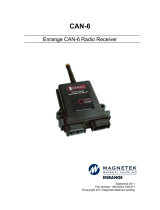 Magnetek Enrange CAN-6 User manual
Magnetek Enrange CAN-6 User manual
-
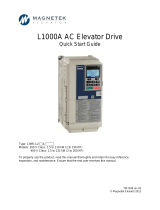 Magnetek L1000A Elevator Drive Owner's manual
Magnetek L1000A Elevator Drive Owner's manual
-
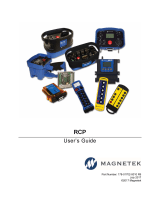 Magnetek Radio Control Programmer (RCP) User manual
Magnetek Radio Control Programmer (RCP) User manual
-
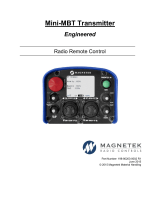 Magnetek Mini-MBT Transmitter Engineered User manual
Magnetek Mini-MBT Transmitter Engineered User manual
-
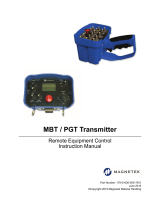 Magnetek MGT/PGT Transmitter Owner's manual
Magnetek MGT/PGT Transmitter Owner's manual
-
 Magnetek MBT/PGT Transmitter Owner's manual
Magnetek MBT/PGT Transmitter Owner's manual
-
Magnetek FLEX M-16 Owner's manual
-
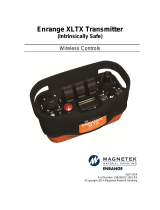 Magnetek Enrange XLTX User manual
Magnetek Enrange XLTX User manual
-
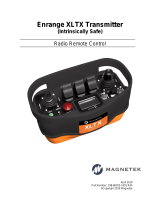 Magnetek XLTX Transmitter-Hazardous Locations Owner's manual
Magnetek XLTX Transmitter-Hazardous Locations Owner's manual
-
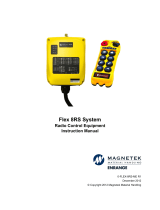 Magnetek Flex 8RS System Owner's manual
Magnetek Flex 8RS System Owner's manual
Other documents
-
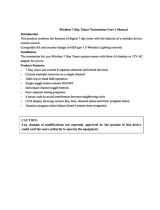 Jasco Products NHS-PT486 User manual
Jasco Products NHS-PT486 User manual
-
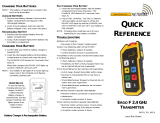 HETRONIC ERGO F Reference guide
HETRONIC ERGO F Reference guide
-
Tele Radio AB 860TX-10 User manual
-
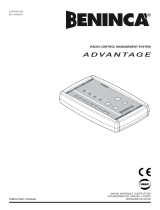 Beninca Advantage User guide
Beninca Advantage User guide
-
Transmitter FLA433TSPW4K Owner's manual
-
BWI Eagle 36-HH-1 Operating instructions
-
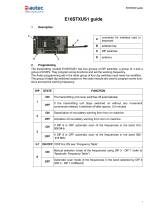 AUTEC E16STXUS1 User manual
AUTEC E16STXUS1 User manual
-
Monarch 433TSPW1K User manual
-
Transmitter 433TSPW1K-C Owner's manual
-
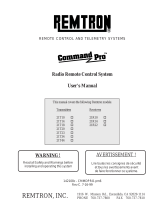 Remtron Command Pro 21T14 User manual
Remtron Command Pro 21T14 User manual




























































